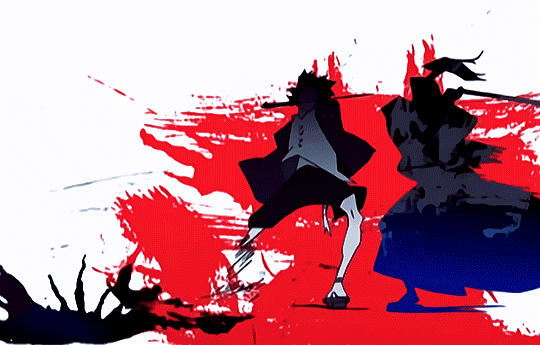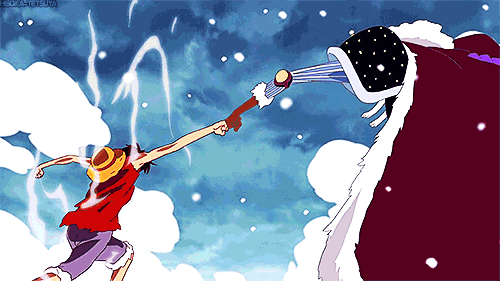Text
2D Animation’s Past, Present, and Future

(Pencil test for Sleeping Beauty) (original video source)
Traditional animation, also called hand-drawn animation, classical animation, cel animation, or by its modern handle, 2D animation, was the main form of animation from the late 19th century up until the creation of the modern computer, when computer-generated animation became the norm. Thanks to animation programs, there’s now a new mode of animating called computer animation, also known as 3D animation, where a figure is rigged to move about in a determined stage, similar to how real-life programs and films are made – the only difference being that the actors are now the animators through a character. Many North American studios had started out with 2D animated movies, but then shifted to focus on creating 3D animated movies thanks to the ease of the technology.

(Gif from Toy Story 4) (source)
Today in our modern world with many technologies at our hands, 3D animation has become the favored animation style, as proven by how much gross they procure at the box office compared to 2D animated films. Disney has virtually abandoned 2D animated movies, seeing as how their last movie in the medium was The Princess and the Frog released in 2009. The movie did well at the box office, but not as good as other 3D animated movies released since then. Seeing as how Disney has monopolized the animation film industry, anything they do will be copied in other animation studios, most notably American ones: DreamWorks Animation, once a studio where both 2D and 3D animated films were worked on in harmony, hasn’t made a 2D animated movie since 2003, when Sinbad: Legend of the Seven Seas was released. 2D animation just doesn’t cut it anymore, and is the main reason why North American studios have opted to stop using it entirely in their films. Because of this shift in power, 2D animation can now mainly be seen in T.V. programs and commercials, with many programs being made from independent creators who’re not affiliated with any studio.

(Gif from She-Ra and the Princesses of Power) (source)
Since 2D animated movies have been booted out of the theaters, it seems that 2D animation will – and has been able to – find a home on the T.V. screen. Thanks to many streaming services available, the services are able to host a multitude of programs and movies, included in these would be 2D animated movies and shows, making them accessible to a larger audience. Independent, or indie, creators are creating their own shows and movies in this medium, examples including Cannon Busters, Urbance, Ernest and Celestine, Hullabaloo, among many others. Additionally, television channels such as Cartoon Network and Nickelodeon are creating and hosting majority 2D animated shows, these including Steven Universe, Adventure Time, The Loud House, and SpongeBob SquarePants. Even bigshot Disney, on their channel Disney XD, has been creating and hosting 2D animated shows like Phineas and Ferb and Star vs. the Forces of Evil. While there are T.V. programs that’re rendered in 3D animation – Miraculous Ladybug, Lego Ninjago, etc. – this goes to show that 2D animation isn’t going anywhere, it’s just migrated someplace new.
That being said, many indie creations aren’t able to access a large audience due to needing the economic support of traditional animation fans who want to see the content. Since indie creators are working alone without much support aside from their small teams, they’ve had to resort to creating Kickstarters in order to raise enough money to start working.

(Gif from Spirited Away) (source)
On the other side of the ocean, Japan has had a long history of 2D animation, so far as to say that it’s its only animation medium. Astro Boy, originally a manga – Japanese comic book – circulating from 1951 to 1981, was first made into an animated program that ran from 1963 to 1976. While the show has been remade two times, with a third adaptation being made, the first show was the one to set in motion what would become known staples of anime. Since then, innumerable animes have been made for every genre, ranging from robot and mecha anime Gurren Lagann to romantic comedies like Ouran High School Host Club. Anime isn’t just programs either, it boasts many exceptional movies such as Akira, Ghost in the Shell (1995), Ponyo, Wolf Children, and more. One of the biggest anime studios is Studio Ghibli, who can be said to be the Japanese Disney. Studio Ghibli has even collaborated with Disney to promote their movies in the North American venues, most notably with Spirited Away.

(Gif from Samurai Champloo) (source)
American audiences love anime. Everywhere you go, there’s anime: today’s kid’s cartoons are always making references to Sailor Moon or Naruto; Pokémon Go made a giant impact all around the world as people of all kinds are trying to catch Pokémons; millennials and Gen Z’rs keep using slang that relates back to anime, like “You are already dead/Omae wa mou shindeiru;” even Disney has been making references to anime, as seen in their films Frozen and Brave, which feature intrepid female leads, something that can be owed to changing gender attitudes, but ultimately “owe a direct line of thanks to Studio Ghibli’s humble hand-drawn animations of years past”. Anime itself was inspired by old Disney cartoons, so it has now come full circle. But why? Why are American audiences so captivated by anime? For one, anime is now more accessible than ever. In the early 2000’s, there wasn’t readily-available subtitled anime, much less dubbed anime, and what was subtitled was made by fans and hosted on YouTube, or it was a collector’s item that would cost a pretty penny. Thanks to new streaming services, especially ones that focus on animes, anime and manga is a lot more accessible now. Take for example Crunchyroll.com: it’s an American company created by university students that streams anime, manga, and dramas (what we Latinos would call “telenovelas”) for free and offers a paid subscription for an even wider access. The website has anime available in eight languages, and has offices in San Francisco, Los Angeles, Chișinău, and Tokyo.

(Gif from One Piece)
Another reason why anime has been such a hit is that anime is as diverse as Western media: there’s something for everyone, and it’s just a matter of exploring and enjoying the content available. Part of that is the creative liberty authors are given, letting them be the one to decide how long the story will stretch for, an example being Eiichiro Oda, the author of One Piece, an ongoing manga and anime. He’s been stated to willing “die for One Piece,” a level of dedication “manifested throughout his series.” On top of that, the East doesn’t have the same sensibilities as the West, making for a larger range of topics that anime can touch upon that Western shows and films would be too frightened or just plain embarrassed to broach, especially given how nowadays people have many hang-ups about many things, and don’t seem to tolerate differences – just look at the outrage Starbucks caused in 2015 when they rolled out a new holiday cup that was just plain red. Every year since then, Starbucks manages to somehow anger everyone about their holiday cups. Anime isn’t made to reach a wider audience, it just wants to tell a story in its own way, and authors and content-creators should know what it feels like to want to tell a story that you know not everyone is going to understand. The movie Spirited Away blew everyone away at the 75th Academy Awards in 2003 where it beat Disney’s two films Lilo & Stitch and Treasure Planet for Best Animated Feature Film, and because of it, put Japanese animated film under the spotlight. Now everyone is informed that anime is not just for kids but can be a compelling medium for storytelling in films, enough to be able to win an Oscar.

(Gif from The Artist) (source)
Noticing how 2D animation is falling to grace in the West despite Western audiences clamoring for anime, a 2D animated medium, makes for a very interesting oxymoron. That being said, this could open up new – or old – doors for 2D animation in the entertainment industry. The Artist is a silent, black-and-white film released in 2011, directed by Frenchman Michel Hazanavicius, and it won Best Picture at the 84th Academy Awards. It was the first silent film to win an Oscar for Best Picture since Wings won it in 1927, and the first totally black-and-white film to win Best Picture since The Apartment won it in 1960. The Artist is mentioned here to demonstrate that old formats such as silent films and black-and-white films can still be successful in this modern age, even going so far to be the most awarded film in France. If silent and black-and-white films could make an astounding comeback, even if just for one moment, then surely the same could be said for 2D animated movies. It’s just a matter of someone driven enough to achieve it.
youtube
(Ramen from Gobelins, L'École de L'Image) (also here)
2D animated movies have started to lose their luster in the American film industry. Because of this, 2D animation has seen a new life in T.V. programs and commercials. Unlike their Western counterparts, the East has been producing a vast array of 2D animated anime and films, being able to even win the highest award a film can get in the West, an Oscar. This proves that 2D animation doesn’t have to be a lesser artform in film, because it can be revitalized and recontextualized just as if it were a silent movie being created in the modern age. 2D animation doesn’t have to be a medium of the past and can instead gain some of its grace again as a respected film mode.
Bibliography
Jozuka, Emiko. Japanese anime: From 'Disney of the East' to a global industry worth billions. Ed. Takashi Murakami. 28 July 2019. Article. 12 November 2019. <https://www.cnn.com/style/article/japan-anime-global-identity-hnk-intl/index.html>.
Macdonald, A.G. Why Western Culture is Beginning to Embrace Anime. 7 August 2017. Article. 12 November 2019. <https://the-artifice.com/western-culture-embrace-anime/>.
Mc Bain Jr., Everard J. Is 2D Animation Dead? Not Really. 2 February 2018. Article. 12 November 2019. <https://celflux.com/is-2d-animation-dead-not-really/>.
Morr. Why We’re Seeing Less 2D Animated Movies and Why They Probably Won’t Make a Comeback. n.d. Bloop Animation. Blog Post. 12 November 2019. <https://www.bloopanimation.com/why-were-seeing-less-2d-animated-movies-and-why-they-wont-make-a-comeback/>.
Riki, J.K. Why Should 2D Animation Be Abandoned? (Part 1). 2015. Commentary. 12 November 2019. <https://www.animatorisland.com/why-2d-animation-should-be-abandoned-part-1/?v=7516fd43adaa>.
Shutterstock. How Hayao Miyazaki Influenced American Animation with Spirited Away. 20 July 2016. Article. 12 November 2019. <https://www.shutterstock.com/blog/miyazaki-influence-on-american-animation>.
Smith, Brandon. Former Disney Veteran Explains Why Big Studios Have Abandoned 2D Animation. Ed. Kelly Conley. 27 February 2015. Opinion. 12 November 2019. <https://www.rotoscopers.com/2015/02/27/former-disney-veteran-explains-why-big-studios-have-abandoned-2d-animation/>.
12 notes
·
View notes